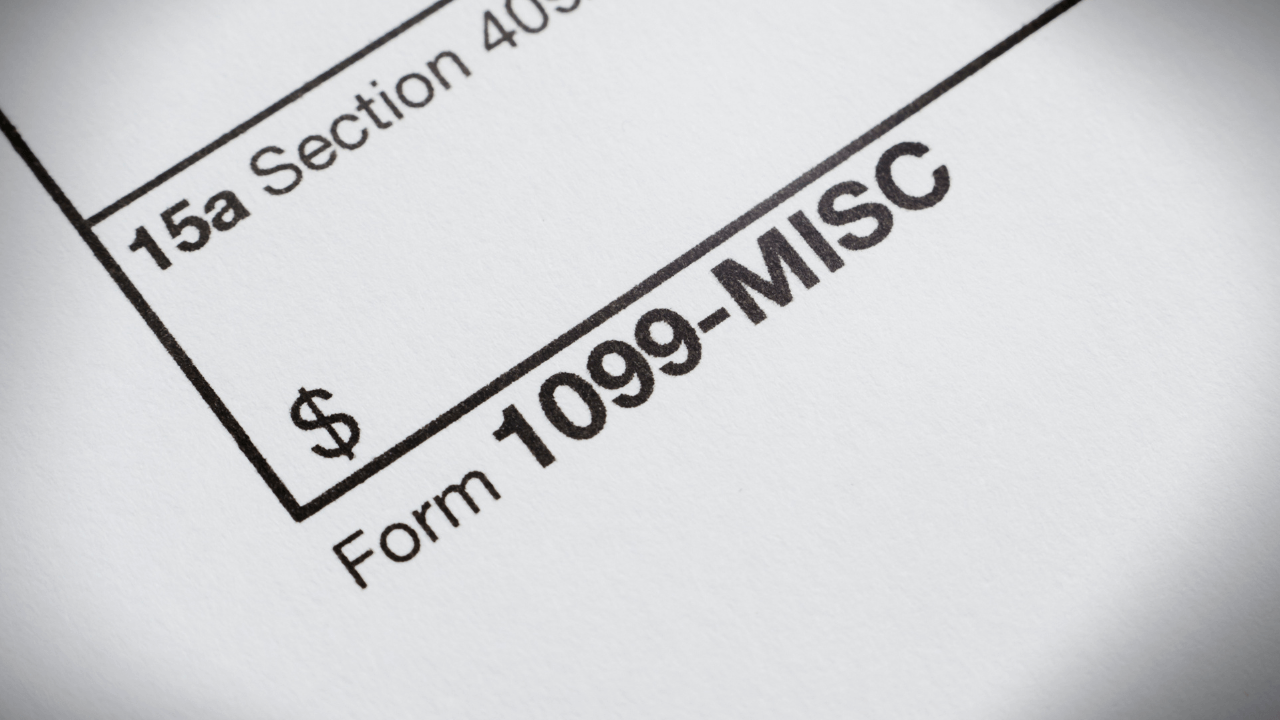Language:
A Complete Guide to IRS Tax Forms

Navigating IRS tax forms can be overwhelming. This comprehensive guide will simplify the process.
We’ll break down the most common forms you’ll encounter. We’ll also explain what they’re for and walk you through how to fill them out without any headaches.
By the end of this article, you’ll have all the knowledge and confidence to understand your tax obligations.
Understanding the Basics of IRS Tax Forms
Let’s begin by establishing a basic understanding of IRS tax forms to ensure a smooth filing process.
The Purpose of IRS Tax Forms
IRS tax forms serve a critical function in the tax collection process. They act as standardized documentation for taxpayers to report their income, expenses and other financial information.
The IRS then uses this data to determine a taxpayer’s tax liability. The core purpose of these forms is to ensure a fair and accurate assessment of what’s owed to the federal government.
These tax forms also work in your favor as a citizen. You can cut your tax bill and even score a refund if you’ve overpaid by claiming eligible deductions and credits.
Navigating the IRS Website for Tax Forms
Here’s how you can find the tax forms you need:
- Visit the IRS homepage.
- For a quick start, hover over the “Forms and Instructions” tab to find the form you need.
- You can also click on “Find forms and instructions.” This will lead you to a dedicated page with two options: search for specific forms by name or browse by tax topic.
- Upon finding your desired form, download it as a PDF for printing or electronic completion.
Key IRS Tax Forms for Individuals
Form 1040: U.S. Individual Income Tax Return
Form 1040 is the core document of your federal income tax return filing. Think of it as a comprehensive summary of your annual income, wages, investments and any other sources.
This form allows you to report deductions and credits that can reduce your tax liability. These deductions can be for mortgage interest or charitable donations, while credits can further reduce your tax burden or even get you a refund.
Keep in mind that Form 1040 is the primary document. However, you may also encounter additional schedules depending on the specifics of your income and deductions.
Form 1040-ES: Estimated Tax for Individuals
Form 1040-ES caters to taxpayers whose income isn’t subject to regular withholding—for instance, freelancers or those with investment earnings. The form facilitates the prepayment of estimated income taxes in four quarterly installments.
This proactive approach helps avoid potential tax penalties by ensuring your tax obligations are met yearly.
Essential IRS Tax Forms for Businesses
Let’s now explore the essential IRS tax forms for businesses:
Form 1120: U.S. Corporation Income Tax Return
For corporations operating within the U.S., Form 1120 is the primary instrument for annual tax reporting. This comprehensive document details a corporation’s financial health and tax obligations for a given tax year.
Form 1120 requires a corporation to report its gross receipts, all deductible business expenses, and any income from investments.
Corporations can also claim deductions for operational costs like employee salaries, rent and office supplies. This helps reduce taxable income and minimize the corporation’s tax liability.
It’s important to note that while Form 1120 is the cornerstone of corporate tax filing, additional schedules may also be required according to the specificity of your corporation.
Form 1065: U.S. Return of Partnership Income
Unlike corporations, partnerships don’t pay income tax. Instead, they report their income, deductions, credits, and losses in Form 1065.
The reported information then “passes through” to the individual partners, who report their share on their personal tax returns.
Form 1065 details the business’s operational earnings, subtracting allowable expenses and factors in any applicable tax credits. The resulting net income or loss is then allocated among the partners according to the terms of their partnership agreement. This predetermined allocation percentage dictates the tax return each partner reports.
In this way, Form 1065 facilitates the accurate calculation and fair reporting of individual taxes for each partner.
Specialized IRS Tax Forms
Having addressed the essential forms for different filing statuses, let’s look at some specialized IRS tax forms for specific tax situations:
Form 1099-MISC: Miscellaneous Income
This form reports income you earned outside of a regular paycheck. Consider it an information slip from the person or business that paid you. It’s an official record of your miscellaneous income during the tax year, separate from traditional W-2 wages.
Common scenarios triggering a 1099-MISC include freelance work, rental income from properties, or specific awards and prizes. If a business or individual pays you $600 or more for qualifying services or goods and you’re not a regular employee, a 1099-MISC is likely on its way.
The form provides crucial details for reporting your complete taxable income and accurate tax filing.
Form W-2: Wage and Tax Statement
The year-end arrival of Form W-2, also known as the Wage and Tax Statement, can confuse some taxpayers. However, understanding this critical document is essential for accurate tax filing. Let’s break down the key elements of Form W-2:
- Earning Summary: Box 1 of the W-2 displays your total wages, salaries and other taxable compensation for the tax year reported by your employer. This is your gross income for tax purposes.
- Tax Withholdings: Box 2 of form W-2 details the federal income tax withheld throughout the year. Boxes 3 and 5 report the Social Security and Medicare taxes withheld by your employer.
- Impact on Tax Return: The information on your W-2 serves as the foundation for calculating your tax liability. The pre-withheld taxes (reported on the form) are subtracted from your total tax owed. You’re entitled to a tax refund if the withheld amount exceeds your tax liability.
- State and Local Taxes: Certain states or localities might impose income taxes, which will be reflected in designated boxes on the W-2.
- Pre-Tax Contributions: Box 12 of the form usually reports your pre-tax contributions to qualified retirement plans or health insurance premiums. These deductions can significantly reduce your taxable income, lowering your tax burden.
Tax Forms for Tax Credits and Deductions
Now, we’ll explore the specific IRS forms that facilitate claiming valuable tax benefits through credits and deductions:
Form 8863: Education Credits
Form 8863 is for individuals incurring post-secondary education expenses. Using it, you can claim education credits offered by the Internal Revenue Service (IRS). These credits can substantially reduce your tax liability or even result in a tax refund.
Form 8863 simplifies the process of claiming two primary education credits:
- American Opportunity Tax Credit: This credit applies to qualified education expenses incurred during the first four years of post-secondary education. It offers an annual credit of up to $2,500 per eligible student.
- Lifetime Learning Credit: Offers a broader scope, applicable to educational expenses throughout your lifetime, with a maximum annual credit of $2,000.
For eligibility, remember that the IRS requires verification of qualified education expenses. This typically comes with Form 1098-T, Tuition Statement, issued by the eligible educational institution, domestic or international.
Schedule A (Form 1040): Itemized Deductions
Schedule A (Form 1040) offers the opportunity to itemize deductions for taxpayers seeking to reduce their taxable income and tax liability. How does it work? Schedule A allows taxpayers to meticulously list and claim qualified expenses that can be subtracted from their Adjusted Gross Income (AGI).
Common itemized deductions include:
- Medical and Dental Expenses
- Some State and Local Taxes
- Home Mortgage Interest
- Charitable Contributions to Qualified Organizations
While itemizing presents the potential for tax savings, it’s not universally applicable. The IRS establishes a standard deduction amount that varies based on filing status. If the sum of your itemized deductions falls below the standard deduction, utilizing the standard deduction offers a more streamlined approach.
Schedule A meticulously categorizes various itemized deductions. To leverage this form effectively, it’s crucial to maintain documentation for your deductible expenses — receipts, canceled checks and medical bills.
Understanding Tax Extensions and Amendments
To ensure timely filing or address potential errors, let’s discuss tax extensions and amendments for already filed returns:
Form 4868: Application for Automatic Extension of Time To File U.S. Individual Income Tax Return
Even the most diligent taxpayers can encounter unforeseen circumstances that impede timely filing. Fortunately, the IRS offers Form 4868, Application for Automatic Extension of Time to File U.S. Individual Income Tax Return. This form allows taxpayers to proactively secure an extra six months to file their federal return.
Key Considerations
- Form 4868 does not extend the deadline for tax payments. Taxpayers are still responsible for meeting estimated tax payment obligations to avoid potential penalties and interest accrual.
- Form 4868 is available to all taxpayers, regardless of the reason necessitating the extension.
- Form 4868 must be filed electronically or mailed to the IRS before the original tax deadline to secure a valid extension.
- In specific situations, such as active military service or residing abroad in a designated disaster area, taxpayers may qualify for an automatic extension exceeding the standard six months.
Filing Form 4868 eliminates the risk of late filing penalties. It also provides additional time to gather necessary documentation and ensure the accuracy of your tax return.
Form 1040-X: Amended U.S. Individual Income Tax Return
Mistakes happen, and the Internal Revenue Service (IRS) understands that.
For taxpayers who discover errors or omissions on a previously filed federal return, Form 1040-X, Amended U.S. Individual Income Tax Return, serves as an important corrective tool. This form lets taxpayers rectify inaccuracies in various situations:
- Corrections for Mathematical Errors
- Inclusion of Omitted Information
- Updates Due to Life Changes
- Claiming Newly Discovered Deductions or Credits
The IRS has also established specific deadlines for submitting Form 1040-X. In most cases, there is a three-year window. Taxpayers have three years from the original filing deadline (or the date the return was filed, whichever is later) to amend their return.
If the amendment results in a tax overpayment and subsequent refund. You typically have two years from the date you paid the tax to claim it.
Digital Tools and Resources for Managing IRS Tax Forms
Conquering tax season doesn’t have to be a solitary struggle. There are numerous digital tools and resources like doola to help you navigate IRS forms with ease. However, the ideal tool depends on your individual needs and comfort level.
At doola, our Tax Compliance package will help you stay compliant and confident. Book a free consultation today to learn more about it and discover how we can help you achieve seamless filings and unlock greater tax savings for your business.
Keep reading
Start your dream business and keep it 100% compliant
Turn your dream idea into your dream business.




















